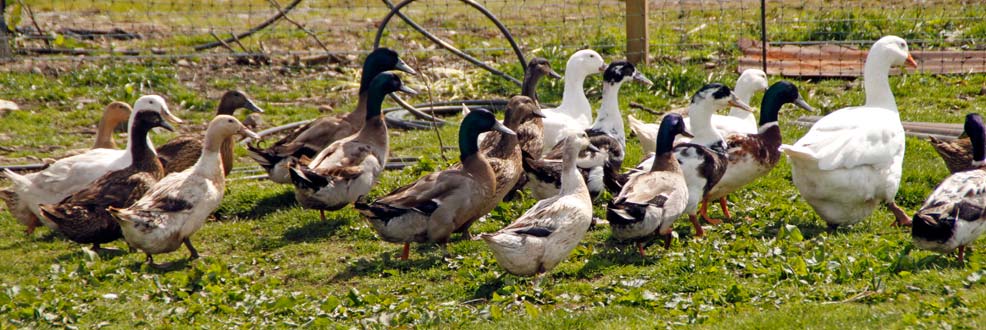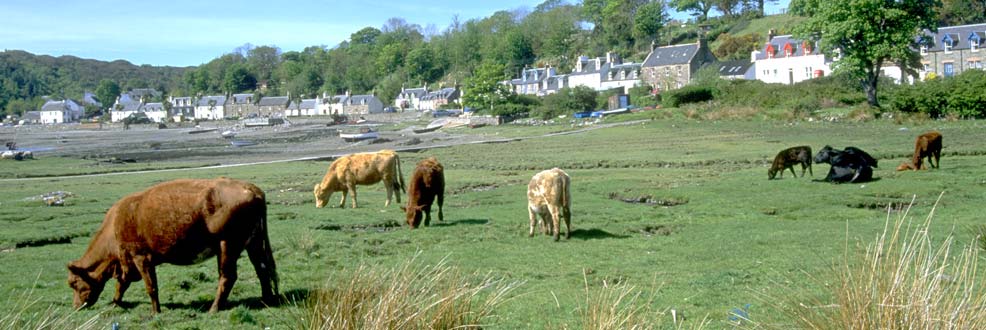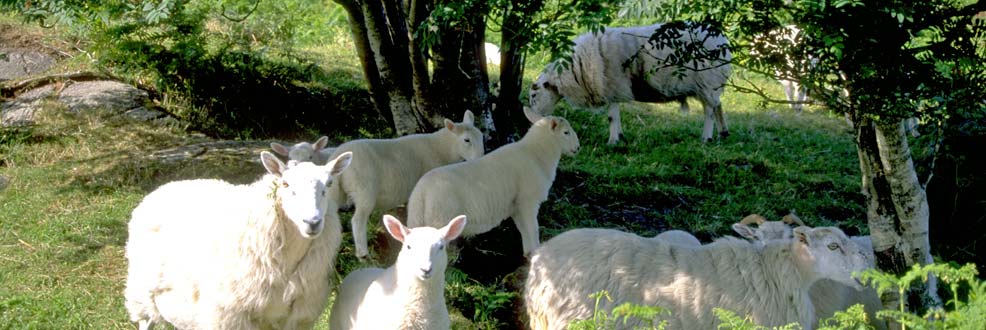Access and visitors
Public access to Scotland's outdoors and the responsibilities of land managers are enshrined within the Scotland Outdoor Access Code.
The public are afforded significant rights to access land for both recreational and educational purposes. However, it is important to recognise that there are two limitations to these rights: access may only be by foot or non-motorised vehicle (this therefore includes bicycle, kayak or horse) and that certain land is excluded, for example, buildings, private gardens and land on which crops are growing. At the same time, Land Managers, not just owners, have a duty to ‘act responsibly in managing their land so as to respect the public rights of access.
These responsibilities are concisely explained in an article entitled ’Public Access Rights – What is my position as a landowner?’ by Grace Watson a Trainee Solicitor with Gillespie Macandrew and Hunters Residential.
The Ramblers have produced two leaflets to help explain the rights and responsibilities of walkers in Scotland: Scotland on Foot and Walking in Scotland.
The Scottish Canoe Association have also published a leaflet, Paddlers Access Code, to advise canoeists on their rights and responsibilities.
It is important that land managers understand and appreciate the expectations of people coming onto the land and it is therefore advisable to read these leaflets, if they apply.
A summary of the main points of each of the 4 parts of the Scotland Outdoor Access Code are given below:
SCOTLAND OUTDOOR ACCESS CODE
Part 1 INTRODUCTION
1.3 The Code is based on three key principles and these apply equally to the public and to land managers.
• Respect the interests of other people. Acting with courtesy, consideration and awareness is very important. If you are exercising access rights, make sure that you respect the privacy, safety and livelihoods of those living or working in the outdoors, and the needs of other people enjoying the outdoors. If you are a land manager, respect people’s use of the outdoors and their need for a safe and enjoyable visit.
• Care for the environment. If you are exercising access rights, look after the places you visit and enjoy, and leave the land as you find it. If you are a land manager, help maintain the natural and cultural features which make the outdoors attractive to visit and enjoy.
• Take responsibility for your own actions. If you are exercising access rights, remember that the outdoors cannot be made risk-free and act with care at all times for your own safety and that of others. If you are a land manager, act with care at all times for people’s safety.
Part 2 ACCESS RIGHTS
A summary of your access rights
1 Everyone, whatever their age or ability, has access rights established by the Land Reform (Scotland) Act 2003. You only have access rights if you exercise them responsibly.
2 You can exercise these rights, provided you do so responsibly, over most land and inland water in Scotland, including mountains, moorland, woods and forests, grassland, margins of fields in which crops are growing, paths and tracks, rivers and lochs, the coast and most parks and open spaces. Access rights can be exercised at any time of the day or night.
3 You can exercise access rights for recreational purposes (such as pastimes, family and social activities, and more active pursuits like horse riding, cycling, wild camping and taking part in events), educational purposes (concerned with furthering a person’s understanding of the natural and cultural heritage), some commercial purposes (where the activities are the same as those done by the general public) and for crossing over land or water.
4 Existing rights, including public rights of way and navigation, and existing rights on the foreshore, continue.
5 The main places where access rights do not apply are:
• houses and gardens, and non-residential buildings and associated land;
• land in which crops are growing;
• land next to a school and used by the school;
• sports or playing fields when these are in use and where the exercise of access rights would interfere with such use;
• land developed and in use for recreation and where the exercise of access rights would interfere with such use;
• golf courses (but you can cross a golf course provided you don’t interfere with any games of golf); • places like airfields, railways, telecommunication sites, military bases and installations, working quarries and construction sites; and
• visitor attractions or other places which charge for entry. 6 Local authorities can formally exempt land from access rights for short periods. Local authorities and some other public bodies can introduce byelaws.
7 Access rights do not extend to:
• being on or crossing land for the purpose of doing anything which is an offence, such as theft, breach of the peace, nuisance, poaching, allowing a dog to worry livestock, dropping litter, polluting water or disturbing certain wild birds, animals and plants;
• hunting, shooting or fishing;
• any form of motorised recreation or passage (except by people with a disability using a vehicle or vessel adapted for their use);
• anyone responsible for a dog which is not under proper control; or to
• anyone taking away anything from the land for a commercial purpose.
8 Statutory access rights do not extend to some places or to some activities that the public have enjoyed on a customary basis, often over a long period of time. Such access is not affected by the Land Reform (Scotland) Act 2003 and will continue.
Part 3 EXERCISING ACCESS RIGHTS RESPONSIBLY
Key points to remember in taking responsibility for your own actions:
• care for your own safety by recognising that the outdoors is a working environment and by taking account of natural hazards; and
• take special care, if you are responsible for children as a parent, teacher or guide, to ensure that they enjoy the outdoors responsibly and safely.
Key points to remember in respecting people’s privacy and peace of mind:
• access rights do not extend to people’s gardens;
• use a path or track, if there is one, when you are close to a house or garden;
• keep a sensible distance from houses, and avoid ground that overlooks them from close by, if there is no path or track;
• take care not to act in ways which might annoy or alarm people living in the house, and keep noise to a minimum; and
• at night, hazards may be less obvious, so take extra care by keeping away from buildings where people might not be expecting to see anyone and by following paths and tracks.
Key points to remember if you come across a land management operation:
• keep a safe distance and take heed of reasonable advice provided by the land manager to ensure that you do not hinder the work;
• for some types of operation, such as crop spraying and tree felling, the land manager has to ensure that people are not affected – follow any precautions provided for your safety;
• do not climb over any stored materials, such as straw bales or timber stacks.
Key points to remember in taking access where there are farm animals:
• be aware that cows, especially cows with calves, can react aggressively to your presence and so keep a safe distance from them and watch them carefully;
• before entering a field of animals, check to see what alternatives there are – it might be easier and safer to go into a neighbouring field or onto adjacent land;
• do not take your dog into a field where there are young farm animals, such as lambs and calves;
• if you take a dog into a field where there are cattle, then keep as far as possible from the animals and keep your dog on a short lead or under close control – if the cows react aggressively and move towards you, let the dog go and take the shortest, safest route out of the field;
• never feed farm animals and take all your litter away with you;
• leave gates as you find them.
Key points to remember when taking access in fields of crops:
• avoid damaging crops by using any paths or tracks, or by going around the margins of the field, or by keeping to any unsown ground, or by going onto neighbouring ground;
• walk or ride in single file where appropriate;
• grass grown for hay and silage is regarded as a crop when it is about 20cm high and when there are no animals grazing on it.
Key points to remember to help you care for your environment:
• do not intentionally or recklessly disturb or destroy plants, eggs, birds and other animals, or geological features;
• do not linger if it is clear that your presence is causing significant disturbance to a bird or other wild animal;
• follow any agreed local information aimed at preventing significant disturbance to protected plants, birds or other animals, or at preventing the spread of erosion in more sensitive areas;
• take extra care to prevent damage in more sensitive natural habitats and to avoid disturbing more sensitive birds and animals, particularly during the breeding season;
• follow any voluntary agreements between land managers and recreational bodies, or requests made by local authorities, Scottish Natural Heritage or other public bodies;
• take your litter away with you.
Key points to remember to help you care for your cultural heritage:
• leave any cultural heritage site as you find it and do not take anything away;
• do not camp, light fires or use metal detectors on any cultural heritage site; and
• follow any local, agreed guidance aimed at preventing damage to a site.
Key points to remember if you have a dog with you:
• never let your dog worry or attack livestock;
• do not take your dog into fields where there are lambs, calves or other young animals;
• do not take your dog into fields of vegetables or fruit unless you are on a clear path, such as a core path or right of way;
• if you go into a field of farm animals, keep as far as possible from the animals and keep your dog(s) on a short lead or under close control;
• if cattle react aggressively and move towards you, keep calm, let the dog go and take the shortest, safest route out of the field;
• during the bird breeding season (usually April to July), keep your dog under close control or on a short lead in areas such as moorland, forests, grassland, loch shores and the seashore;
• pick up your dog’s faeces if it defecates in a public open place; and
• in recreation areas and other public places, avoid causing concern to others by keeping your dog under close control.
Key points to remember if you are organising an event or running a business:
• contact the relevant land manager(s) if you are organising an educational visit to a farm or estate for a specific purpose, and follow any advice on what precautions you might need to take;
• obtain the permission of the relevant land manager(s) if your event needs new or temporary facilities and services or is likely, due to the nature of the event or the number of people involved, to hinder land management operations, interfere with other people enjoying the outdoors or affect the environment to an unreasonable extent;
• for larger events, make sure that you minimise impacts on the interests of other people and the environment;
• if you run a business which utilises access rights, show extra care by minimising the impacts of your activities and by trying to talk to the land managers who are responsible for places that you use regularly or intensively.
Part 4 MANAGING LAND AND WATER RESPONSIBLY FOR ACCESS
Key points to remember:
• do not purposefully or unreasonably prevent, hinder or deter people from exercising access rights on or off paths and tracks;
• use paths and tracks as a way of providing for and managing access across your land so that access is integrated with land management;
• take account of access rights when planning and implementing any major land use change or development.
• if it is necessary for safely and effectively undertaking a land management operation, you can ask people to go around the edge of the field or to go into a neighbouring field;
• where there are more serious or less obvious hazards, you can take precautions, such as asking people to avoid using a particular route or area or to avoid doing a particular activity;
• these requests need to be for the minimum area and duration required to safeguard people’s safety.
• people tend to respond best to land managers who show that people are welcome;
• where possible, work closely with your local authority and others to help provide good paths across your land and to manage access positively, such as through the local authority ranger service; • think about how you would like to see access provided for and managed on your land or water and involve your local authority in this.











